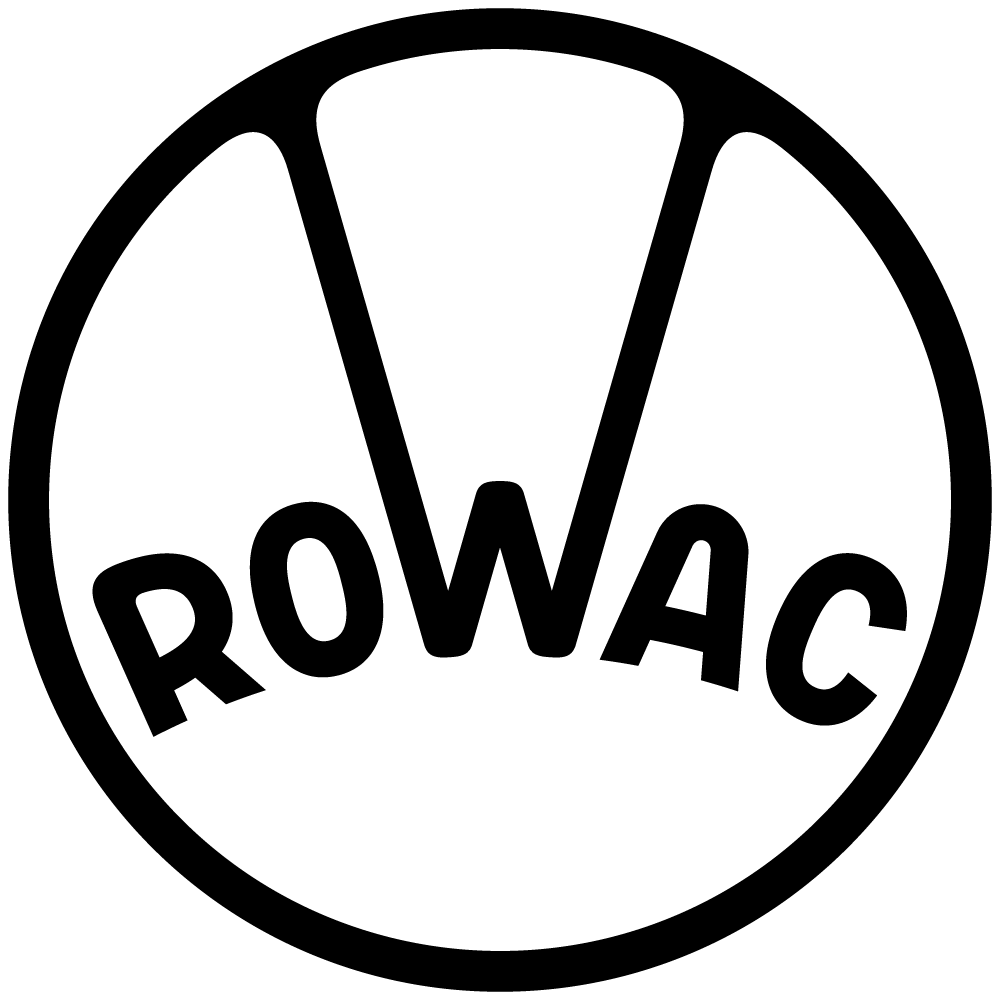André Kirbach – Gallerist & Art Dealer
“They are timeless without becoming arbitrary.”
We came across you because a few Rowac products are featured in your galleries. Do they serve more as objects or as a stage for art?
That's a good question, because people have been stumbling over Rowac stools in my Düsseldorf gallery for half an eternity. A Rowac stool has become a statement, not just a stool. And actually it was a “schemel”, as the old Rowac advertisements show. But I didn't know all that at the time, nor did I know anything about Rowac. I just found the things compelling. But that's just it. If something is really good, you don't need to know much. The object simply holds its own next to other good things. So then the stool becomes the stage for the art - but also vice versa.
You have exhibition venues in Düsseldorf and Pilsum - What motivated you to transform the former Pilsum village market into Kunstraum Pilsum?
Jörg and I purchased this small, enchanting 18th-century farmhouse in Krummhörn in 2014 as a retreat from Düsseldorf’s "city life. It's such a nice place to live that the weekend house quickly became our center of life. In 2015, the old village market in Pilsum was put up for sale, the last of its kind in the Krummhörn. We didn't have to think about it all that long - the vision of the Kunstraum Pilsum was born. After extensive renovation, the doors were opened in 2021. Today, the Kunstraum Pilsum houses my gallery and the Kunststiftung Krummhörn e.V., which we founded in 2018.
At the age of 16, you were the youngest member of the artists' association in your hometown of Moers, Germany. What made you decide to study object design?
Before I studied object design, I first had to clarify one thing for myself - namely, not to become an artist. Which, by the way, I see somewhat differently today, because the pictures of the then 16-year-old stand up quite well to my strict criticism to this day. But at that time it was important to explore my limits as well as my strengths and weaknesses. So I decided to study design, which was certainly the best decision, because my studies form the basis for many of my activities today.
At what point in your life did you come across Rowac and what fascinates you about it?
I stumbled across my first Rowac schemel about 20 years ago at the Düsseldorf Design Börse. I bought two pieces in the 50 cm height. Of course they still accompany me today, they don't break. But that's not what fascinates me about Rowac. There is something behind these things. There is something right to the point about them.
Can you tell us about your sculpture by Hede Bühl and why you decided to place it on this very Rowac schemel?
Hede Bühl is one of the most important German sculptors of the post-war period. I've known her head sculptures since I attended my first Art Cologne Fair in the 80s. I especially love this early head made of bronze, which was created in her academy days under Beuys. Why did it find its place exactly on this Rowac schemel? Everything just fit, from the height (55 cm) to the splash of paint at the base of the leg. The Rowac schemel was actually an industrial mass product, but over the decades all these stools became little individualists with their own unique histories - their personal quirks, edges and traces of time.
How would you describe the Rowac aesthetic?
It is a very special aesthetic. Because it manages to combine classic beauty and modernity. Above all, it is a pre-Bauhaus aesthetic that anticipates something without abandoning its subtle details. Rowac is not really sleek, Rowac shows a fine ornamentation due to the manufacturing process involved. And this is not a crime (Adolf Loos: Ornament and Crime, 1908), on the contrary - they are timeless without becoming arbitrary.
You use your Rowac furniture in everyday life; so they're not just for display?
You simply have to use Rowac, that's what they' re made for. We have almost all of our pieces in use. But the most important piece in our furniture collection is undoubtedly our four-legged grinder-schemel. That's right! Because we still grind our coffee by hand every morning. I've been doing it for over 30 years now, and always with the same coffee grinder. If you've ever ground coffee with an old grinder, you know that turning the crank can release some serious power. And for that you need a sturdy stool. Or ideally a Rowac schemel!










